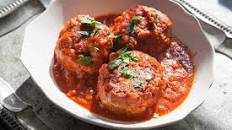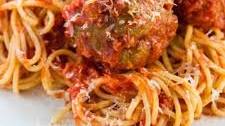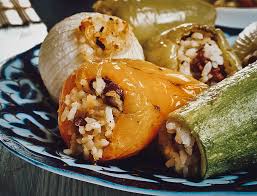Savouring the World of Meatballs: A Culinary Journey Across Cultures

The Delicious World of Meatballs
Meatballs are a beloved dish enjoyed in various cuisines around the world. These flavourful spheres of ground meat, mixed with herbs, spices, and other ingredients, offer a comforting and satisfying dining experience.
History and Origins
The exact origins of meatballs are debated, with different cultures claiming to have invented this versatile dish. From Italian “polpette” to Swedish “köttbullar” and Turkish “köfte,” meatballs have been a staple in many culinary traditions for centuries.
Ingredients and Variations
While the base of meatballs is typically ground meat (such as beef, pork, lamb, or chicken), the variations are endless. Vegetarian options using lentils or mushrooms have also gained popularity. Herbs like parsley, oregano, and basil add depth of flavour, while breadcrumbs or rice can help bind the mixture together.
Preparation and Serving
Meatballs can be fried, baked, or simmered in sauce depending on the recipe. They are often served with pasta, mashed potatoes, or as part of a sandwich. In some cultures, they are enjoyed on their own as a tapas-style dish.
Global Influence
Meatballs have transcended borders and have been adapted to suit local tastes worldwide. Whether served in a rich tomato sauce in Italy or skewered on bamboo sticks in Asia, the versatility of meatballs makes them a favourite among food enthusiasts everywhere.
Conclusion
Whether you prefer them spicy or mild, bite-sized or jumbo, meatballs offer a culinary experience that is both comforting and exciting. With endless possibilities for creativity and adaptation, these savoury spheres continue to captivate taste buds across the globe.
Everything You Need to Know About Meatballs: Ingredients, Cooking Tips, Sauces, and More
- What are meatballs made of?
- How do you cook meatballs?
- What sauces go well with meatballs?
- Are meatballs healthy?
- Can you freeze meatballs?
- What sides can I serve with meatballs?
- Are there vegetarian options for meatballs?
- What is the origin of meatballs?
What are meatballs made of?
Meatballs are typically made of ground meat, such as beef, pork, lamb, or chicken, combined with a variety of ingredients to enhance flavour and texture. Common additions include breadcrumbs or rice as binders, along with herbs like parsley, oregano, and basil for added depth of taste. Different culinary traditions may incorporate unique spices and seasonings to create their own distinct versions of meatballs. Vegetarian alternatives also exist, using ingredients like lentils or mushrooms as a substitute for the meat component. The versatility in ingredients allows for a wide range of meatball variations to cater to different preferences and dietary requirements.
How do you cook meatballs?
Cooking meatballs is a straightforward process that can be done using various methods. To cook meatballs, start by shaping the seasoned mixture into evenly sized balls. You can then choose to bake them in the oven, fry them in a pan, or simmer them in a sauce on the stovetop. Baking meatballs is a healthier option that results in a juicy interior and crispy exterior, while frying gives them a golden brown crust. Simmering meatballs in sauce allows them to absorb the flavours of the liquid they are cooked in. Whichever method you choose, ensure that the meatballs are cooked through and reach an internal temperature of 165°F (74°C) to guarantee they are safe to eat.
What sauces go well with meatballs?
When it comes to pairing sauces with meatballs, the options are plentiful and diverse. Classic choices like marinara sauce, a rich tomato-based sauce often associated with Italian cuisine, complement the savoury flavours of meatballs beautifully. For those seeking a creamier option, bechamel or Alfredo sauce can add a luxurious touch to the dish. Barbecue sauce offers a tangy and smoky twist, while sweet and sour sauce provides a delightful contrast of flavours. Ultimately, the best sauce for meatballs depends on personal preference and desired flavour profile, allowing for endless experimentation and culinary creativity.
Are meatballs healthy?
When it comes to the question of whether meatballs are healthy, the answer largely depends on how they are prepared and consumed. While meatballs can be a good source of protein, vitamins, and minerals, their healthiness can be influenced by factors such as the type of meat used (lean vs. fatty), portion size, cooking method (baked vs. fried), and accompanying ingredients. Opting for lean meats, incorporating whole grains or vegetables into the mixture, and avoiding excessive amounts of added fats or sodium can contribute to a healthier meatball option. Ultimately, moderation and mindful choices play a key role in determining the healthfulness of enjoying meatballs as part of a balanced diet.
Can you freeze meatballs?
Yes, you can freeze meatballs for future use. Freezing meatballs is a convenient way to extend their shelf life and have a quick meal option on hand. To freeze meatballs, ensure they are fully cooked and cooled before placing them in an airtight container or freezer bag. Properly stored, frozen meatballs can last for up to 3-4 months without compromising their taste or texture. When ready to enjoy, simply thaw the meatballs in the refrigerator overnight or reheat them directly from frozen in a sauce or oven. This simple freezing method allows you to enjoy homemade meatballs at your convenience.
What sides can I serve with meatballs?
When it comes to serving meatballs, the options for delicious sides are plentiful. Classic choices include creamy mashed potatoes, al dente pasta with marinara sauce, or a crisp green salad with a tangy vinaigrette. For a heartier meal, consider pairing meatballs with roasted vegetables like carrots and Brussels sprouts or a fragrant pilaf of rice or couscous. The versatility of meatballs allows them to be complemented by a wide range of sides, ensuring a satisfying and well-rounded dining experience for all tastes.
Are there vegetarian options for meatballs?
For those seeking vegetarian alternatives, there are indeed various options available for meatballs that do not include meat. Vegetarian meatballs can be crafted using ingredients such as lentils, mushrooms, chickpeas, or tofu as the base instead of traditional ground meat. These plant-based alternatives are often flavoured with herbs and spices to mimic the taste and texture of traditional meatballs, offering a delicious and satisfying option for vegetarians and those looking to reduce their meat consumption. Whether served in a tomato sauce, on pasta, or in a sandwich, vegetarian meatballs provide a versatile and flavoursome twist on this classic dish.
What is the origin of meatballs?
The origin of meatballs is a topic that sparks lively debate among food historians and enthusiasts. While it is challenging to pinpoint the exact birthplace of this beloved dish, various cultures claim ownership of its creation. Italian “polpette,” Swedish “köttbullar,” and Turkish “köfte” are just a few examples of meatball variations that have deep roots in their respective culinary traditions. Whether shaped by hand or crafted with unique seasonings, meatballs continue to be a global favourite, showcasing the diverse and rich history of this versatile comfort food.


